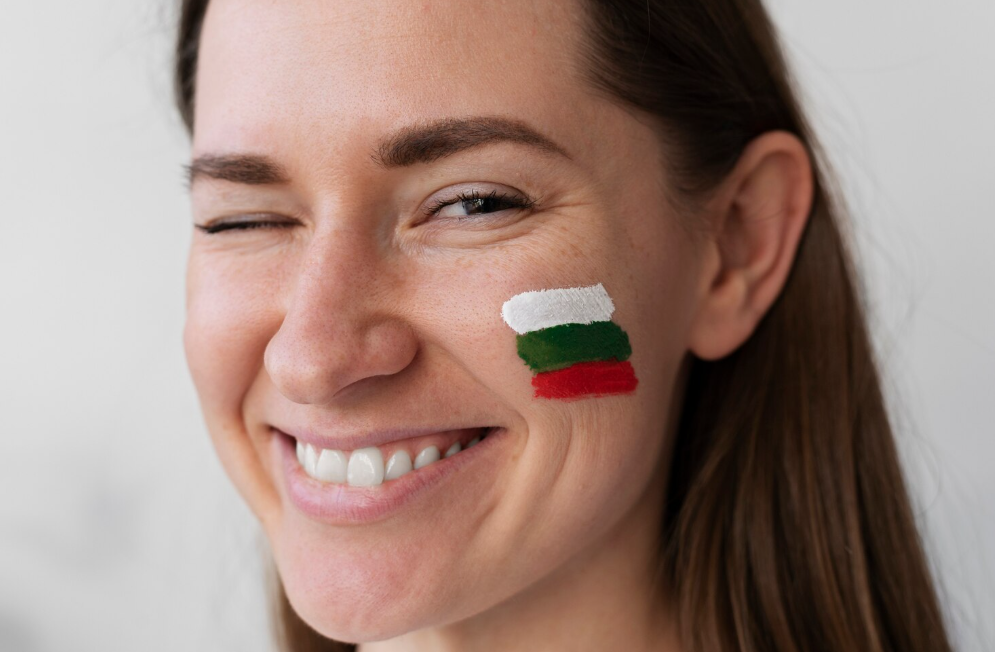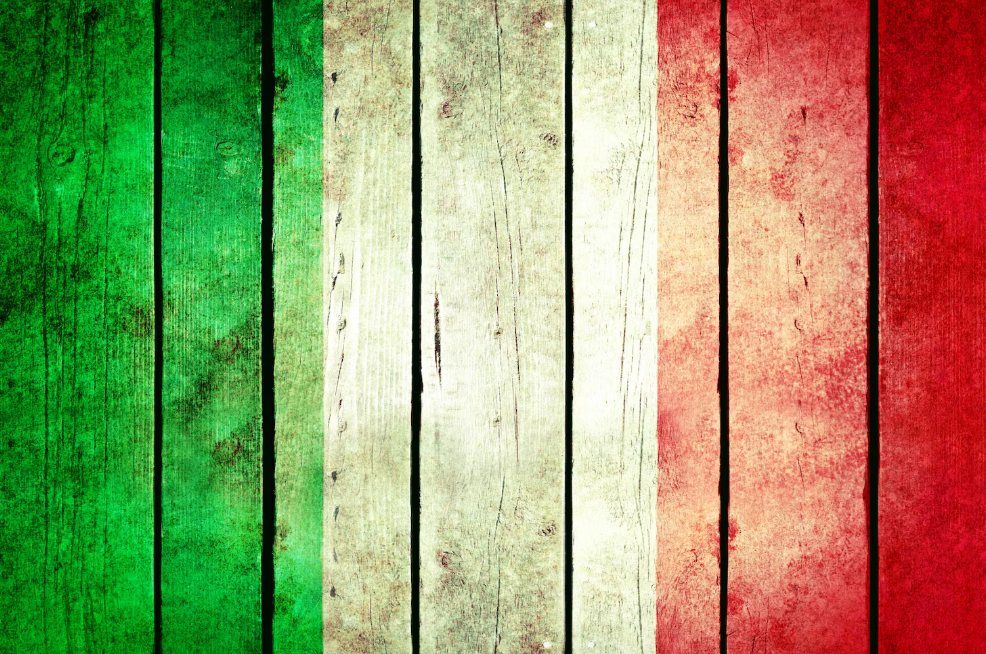Blog
Italian Flag: Colors of History and Pride

The sight of the Italian flag, with its vibrant vertical stripes of green, white, and red, is instantly recognizable around the globe. It flies proudly over government buildings, waves enthusiastically in the hands of football fans, and adds a splash of national color to restaurants and celebrations worldwide. This simple yet powerful tricolor, known as “il Tricolore,” is more than just a piece of cloth; it is a profound symbol of Italian unity, culture, and history. Its journey from a revolutionary banner to the official emblem of a modern republic is a story woven into the very fabric of the nation. Understanding its origins and meaning provides a deeper appreciation for Italy itself, a country renowned for its art, passion, and enduring spirit. The flag stands as a silent witness to the struggles and triumphs that shaped the Italian peninsula.
The Birth of the Tricolore
The Italian flag first emerged during a period of great political upheaval at the end of the 18th century. Inspired by the French Revolution and its tricolor flag, Italian patriots in the Cispadane Republic adopted a similar banner in 1797. This early version featured the same green, white, and red stripes, but they were arranged horizontally. The choice was a deliberate political statement, aligning the nascent Italian nationalist movement with the revolutionary ideals of liberty and reform sweeping across Europe. Napoleon Bonaparte’s campaigns in Italy played a crucial role in popularizing this symbol, as various republics he established adopted variations of the tricolor. It quickly became a symbol of hope and rebellion against the old monarchical orders and foreign domination, uniting diverse regions under a common identity.
What Do the Three Colors Represent?
The meaning behind the three colors has been interpreted in various beautiful and poetic ways over the centuries. A common and enduring interpretation links them to the country’s physical landscape and virtues. Green is often said to represent the country’s rolling hills, plains, and the hope for a unified future. White symbolizes the snow-capped peaks of the Alps and Apennines and the faith in the nation’s destiny. Red evokes the blood shed by those who fought for Italy’s independence and unification, representing love and charity. While these are the traditional and most beloved explanations, another theory suggests the colors were derived from the civic militia of Milan, which wore green and white, combined with the red from Milan’s coat of arms.
The Historical Evolution of the Design
From its initial adoption, the Italian flag’s design was not static; it evolved significantly before reaching its current form. After the fall of Napoleon, the tricolor was suppressed by the restoration of old regimes but remained a potent secret symbol for revolutionaries. During the Risorgimento, the movement for Italian unification, the flag was proudly flown by figures like Giuseppe Garibaldi and his Redshirts. When the Kingdom of Italy was proclaimed in 1861, the flag incorporated the coat of arms of the Savoy dynasty, the royal house, which featured a cross and a crown on the central white stripe. This royal standard remained the official flag for over eighty years, through the Kingdom of Italy and the fascist era, symbolizing the nation under a constitutional monarchy.
The Flag of the Italian Republic
With the fall of the monarchy and the establishment of the Italian Republic following a national referendum in 1946, the flag underwent its most significant and final change. The Savoy coat of arms was removed from the central white stripe, restoring the flag to a simple, clean tricolor. This alteration was deeply symbolic, representing the people’s choice for a republican government over a monarchical one. The new constitution of 1948 officially defined the flag of the Italian Republic as a vertical tricolor of green, white, and red of equal dimensions. This pure design, free of any emblems, reflected a fresh start for the nation, grounded in democratic principles and a collective national identity that belonged to all citizens, not a ruling family.
The Flag in Italian Culture and Society
The Italian flag is deeply embedded in the daily life and culture of the nation, far beyond its official functions. It is a ubiquitous presence during national holidays like Festa della Repubblica on June 2nd, where it is ceremoniously displayed across the country. In the world of sports, especially football and Formula One, the flag becomes a vibrant symbol of collective passion, with fans wearing it and waving it to support their national teams. Its colors inspire everything from fashion and design to food presentations, where a dish featuring green (basil), white (mozzarella), and red (tomato) is proudly called “a tricolor.” This deep cultural integration shows how the flag is not just a state symbol but a living part of Italian identity and pride.
Protocol and Proper Display
There are specific rules and customs governing the display of the Italian flag, reflecting the respect it commands. The flag must always be displayed in a position of honor and treated with dignity. When flown vertically, the correct orientation is with the green stripe on the left and the red on the right from the viewer’s perspective. It is never allowed to touch the ground or water, and it should be illuminated if flown at night. On public buildings, it is typically displayed alongside the European Union flag. During periods of national mourning, the flag is flown at half-mast. These protocols ensure that the symbol of the nation is always treated with the utmost reverence.
Common Misconceptions and Comparisons
A frequent misconception involves confusing the Italian flag with the flag of Mexico, which also uses green, white, and red. The two flags are distinct in their layout and central symbol. The Mexican flag features these colors in vertical stripes, but its white stripe is charged with the country’s complex national coat of arms, an eagle perched on a cactus with a snake in its beak. The Italian flag, in its republican form, has no emblem. Furthermore, the shades of color are different; the Italian green tends to be a lighter, brighter green, while the Mexican green is deeper. The proportions of the flags can also differ, helping to distinguish them when seen side by side.
The Flag as a Symbol of Unity

Despite Italy’s famous regional diversity, with strong local identities, dialects, and traditions, the tricolor serves as a powerful unifying force. It represents the collective history and shared destiny of all Italians, from the northern Alps to the southern islands. It is a symbol that transcends regional political differences and reminds citizens of their common bonds. In times of national crisis or celebration, the flag becomes a focal point for solidarity. It embodies the concept of “campanilismo” looking beyond one’s own bell tower to embrace the wider nation. This role as a unifier is perhaps its most important function in the modern era.
The Enduring Legacy of the Tricolor
The Italian flag’s journey mirrors the nation’s own path to unity and its development as a modern state. From a revolutionary emblem to a royal standard and finally to the symbol of a republic, it has adapted while retaining its core identity. Its simple, bold design has ensured its timelessness, making it as relevant today as it was over two hundred years ago. The green, white, and red continue to inspire pride, represent Italian excellence abroad, and connect the global Italian diaspora to their heritage. The flag is not merely a historical artifact; it is a living, breathing symbol that continues to shape and reflect the Italian national character.
Conclusion
The Italian flag is a tapestry woven with threads of history, poetry, and national spirit. Its three simple colors tell a complex story of hope, faith, and sacrifice. From the battlefields of the Risorgimento to the bustling piazzas of modern cities, the tricolor has been a constant witness to Italy’s evolution. It is a symbol that every Italian carries in their heart, a representation of a culture known for its incredible contributions to art, science, cuisine, and life itself. To understand the Italian flag is to understand a key part of Italy’s soul.
Frequently Asked Questions
Why is the Italian flag green, white, and red?
The colors are traditionally interpreted as representing hope (green), faith (white), and love or the blood shed for unification (red).
What is the difference between the Italian and Mexican flags?
The Mexican flag has a national coat of arms in the center of its white stripe and uses different shades of green and red.
When did Italy adopt its current flag?
The plain tricolor without any coat of arms was officially adopted by the Italian Republic on January 1, 1948.
Are there rules for flying the Italian flag?
Yes, there are strict protocols, including correct vertical orientation and ensuring it never touches the ground.
What was on the Italian flag before 1946?
The flag of the Kingdom of Italy featured the coat of arms of the royal House of Savoy on the white central stripe.
-

 Tech1 year ago
Tech1 year agoHow to Use a Temporary Number for WhatsApp
-

 Business2 years ago
Business2 years agoSepatuindonesia.com | Best Online Store in Indonesia
-

 Social Media1 year ago
Social Media1 year agoThe Best Methods to Download TikTok Videos Using SnapTik
-

 Technology1 year ago
Technology1 year agoTop High Paying Affiliate Programs
-

 Tech10 months ago
Tech10 months agoUnderstanding thejavasea.me Leaks Aio-TLP: A Comprehensive Guide
-

 FOOD1 year ago
FOOD1 year agoHow to Identify Pure Desi Ghee? Ultimate Guidelines for Purchasing Authentic Ghee Online
-

 Instagram3 years ago
Instagram3 years agoFree Instagram Auto Follower Without Login
-

 Instagram3 years ago
Instagram3 years agoFree Instagram Follower Without Login




















